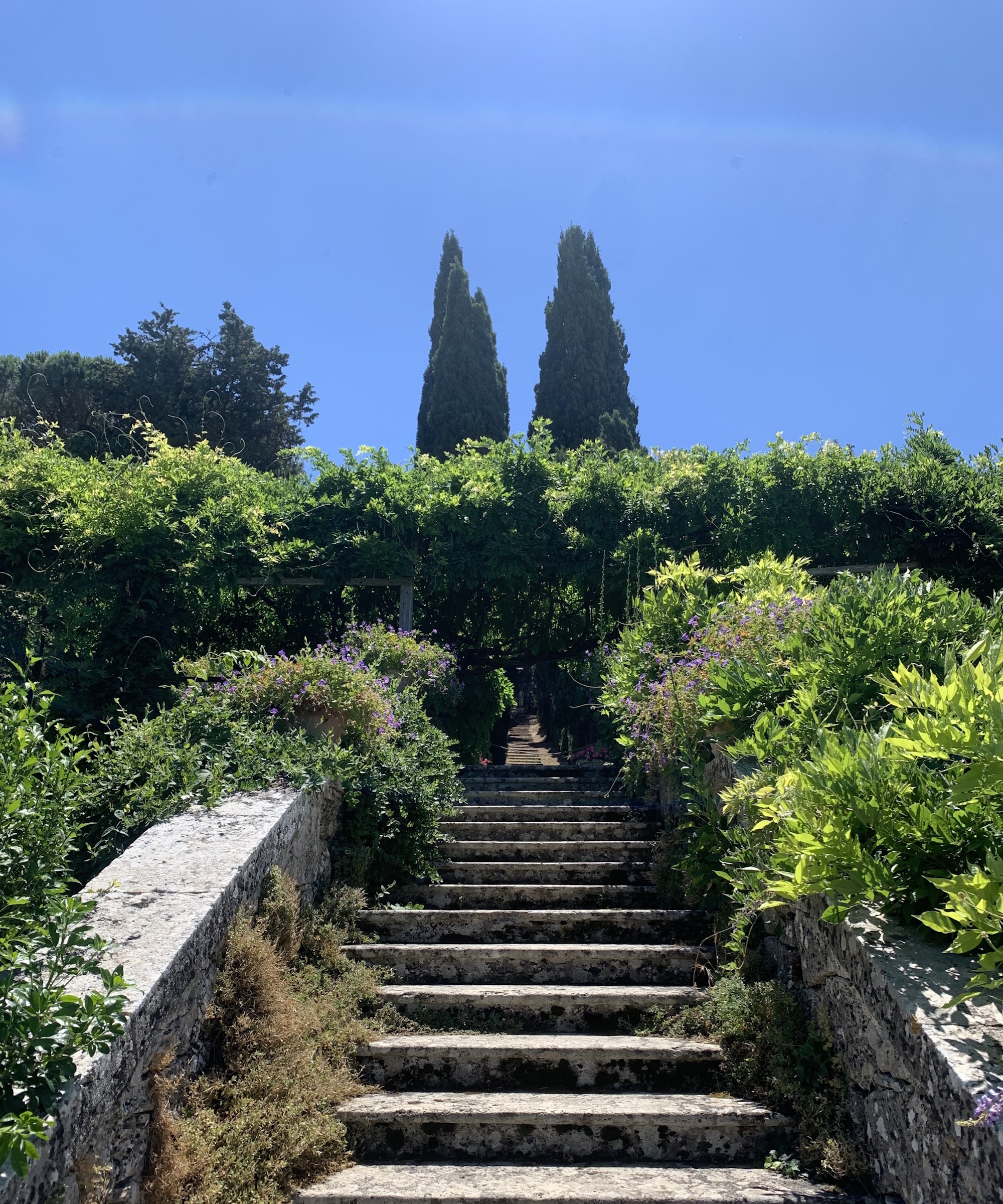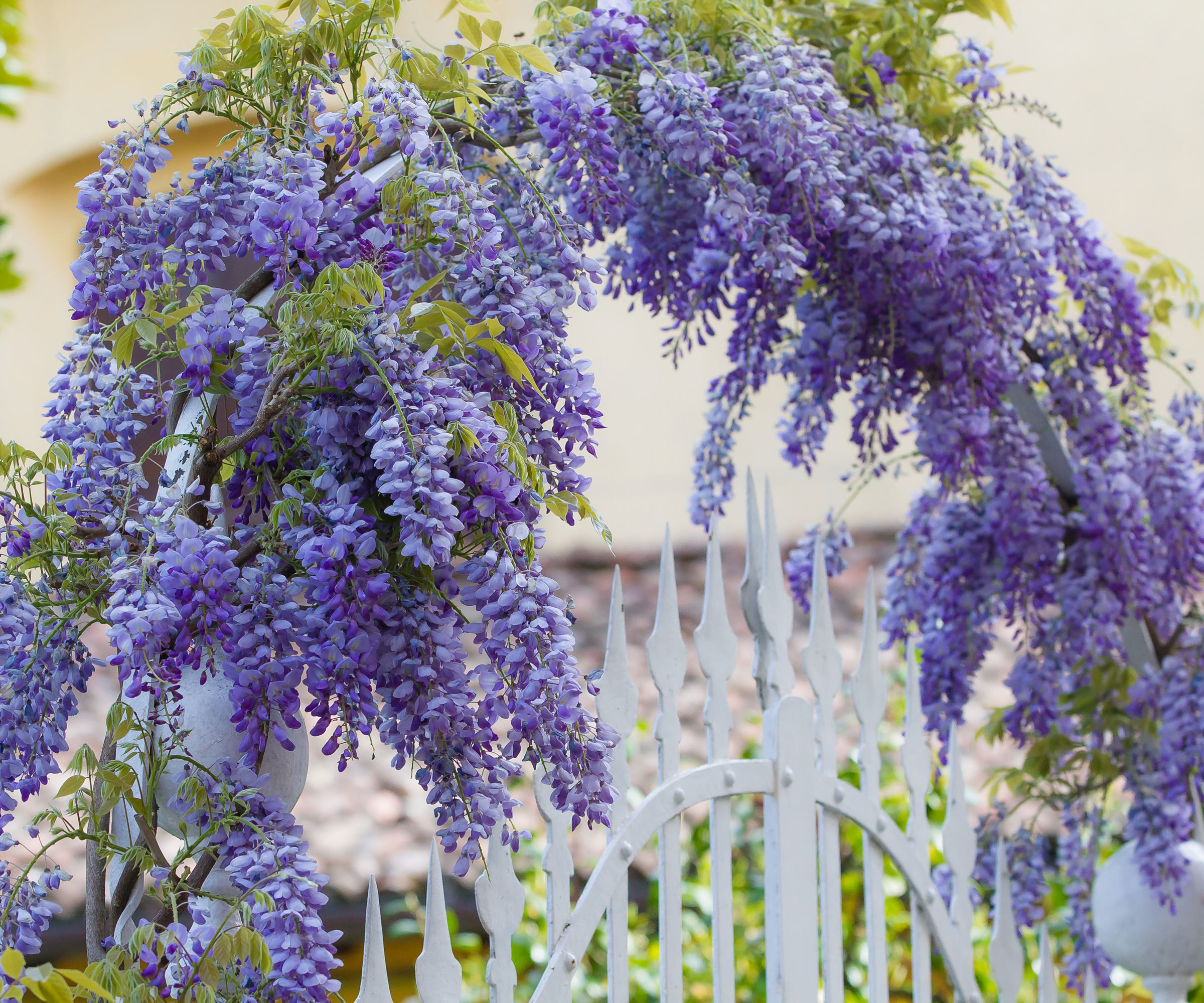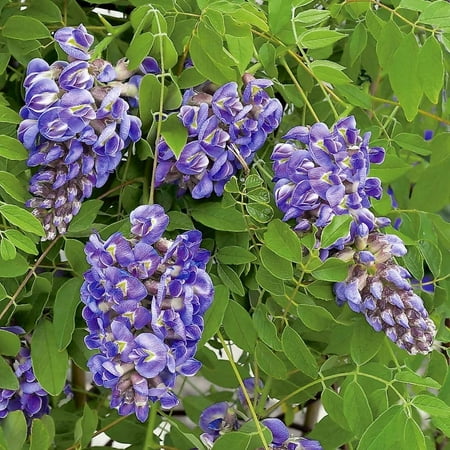How to grow wisteria in pots – for an easy-to-grow climber that will produce masses of fragrant, colorful blooms
Growing climbers in pots is a great option if you have a compact outside space


When I worked as a gardener in Italy, one of the most spectacular sights was a vast wisteria walkway that I cared for. Ten or more mature plants, hanging with pendulous pale lilac and purple blooms that were trained over a metal framework. Believe me, the scent in May was intoxicating.
While these specimens were grown in the ground, I also grew several potted wisterias, too. Large, terracotta vases, planted with white-flowered wisteria varieties, trained carefully over metal obelisks. And, while smaller in stature, these pots were no less impressive.
So, even if you have a small yard, balcony or patio, learning how to grow wisteria in pots is possible, and can actually make maintenance a whole lot easier. Here, I share everything I know about the rules to follow when growing in containers, including recommendations on my favorite varieties.

How to grow wisteria in pots
There are so many climbers to grow in pots, from star jasmine to trumpet vine, clematis to honeysuckle. If anything, we gardeners are spoiled for choice.
Wisteria might not be your first thought when seeking vines for containers, but this vigorous flowering plant can grow just fine in a pot, so long as a few simple rules are abided by.
Growing wisteria in pots

In my experience, wisteria are some of the easiest climbers to grow, so long as they enjoy a sunny nook or corner in the yard. There are many different species to choose from, including white and lilac options.
You may have come across the popular 'Amethyst Fall' variety, for instance, which is highly valued for its fragrance and will flower in its first year.
Design expertise in your inbox – from inspiring decorating ideas and beautiful celebrity homes to practical gardening advice and shopping round-ups.
Live 'Amethyst Falls' wisteria plants are available from Perfect Plant Nursery via Amazon.
For a North American native plant, opt for the American wisteria, Wisteria frutescens, which can be planted down to zone 5, and is another brilliant bloomer.
More commonly seen, both the Chinese wisteria, Wisteria sinensis, and Japanese wisteria, Wisteria floribunda, can also be grown in pots down to zone 5, although these two species can spread rapidly and are considered invasive climbers in several US states.
While growing in pots is a good way to control the spread of fast-growing climbing plants, I would always recommend doing your homework before choosing which species is right for you and the region you live in.
Next, you need to pick the right pot. With wisteria, bigger is always better. Remember that wisteria vines are vigorous growers and can produce extensive root networks, so go for a large container, at least 18 to 24 inches wide and deep. This will prevent you from having to repot for a few years.
Then, using something like this organic potting soil from Whitney Farms, available at Walmart, fill your pot, combining the mix with some horticultural grit or gravel for drainage.
Plant your young wisteria specimen in early spring or fall when temperatures are mild. And crucially, give it something to climb: an obelisk, a sturdy trellis, or even a metal frame.
Ongoing care for wisteria in pots

During the first few months, deep watering is encouraged, just to help your vine settle into its new home.
You’ll need to tie in wisteria shoots as they grow, guiding the plant to form the shape you want. Left alone, they can become a little unruly.
In terms of how to prune wisteria, pot specimens will need regular pruning to keep them manageable.
Cut back long shoots in summer, leaving around five to six buds or so per shoot. Then, in late winter, prune your wisteria again, shortening those same shoots back to two to three buds. Just think: moderate prune in summer to tidy up the plant, hard prune in winter to keep the plant compact and flowering well.
Ideally, you want to repot your wisteria every three years, lifting your vine out of its container in early spring, moving it to a bigger container and refreshing the compost.
With the right care, a potted wisteria can thrive for decades, adding height, scent and structure to even the smallest outdoor spaces.
FAQs
Should I fertilize wisteria plants in pots?
In general, it is not necessary to fertilize wisteria vines in the ground, as they can access what they need from the soil. However, pot-grown climbers rely on you, the gardener, for their water and nutrition. So, during spring and summer, it is a good idea to provide a monthly feed for your wisteria plants, using an organic all-purpose feed.
Most wisteria species do not need protecting in the winter, and can cope just fine with ice, snow and frost. However, just keep an eye on your pot displays during winter, and, if necessary, bring the pots to sheltered areas where they are slightly more protected from winds and cold weather.
For more inspiration, see our guide on how to grow star jasmine in pots, and fill fences and walls in your yard with fragrance this summer.
Shop wisteria accessories

Thomas is a Content Editor within the Gardens Team at Homes and Gardens. He has worked as a professional gardener for both public spaces and private estates, specializing in productive gardening, growing food and flowers. Trained in Horticulture at the Garden Museum, he has written on gardening and garden history for various publications, including The English Garden, Gardens Illustrated, Hortus, The London Gardener and Bloom. He has co-authored a Lonely Planet travel book, The Tree Atlas, due out in 2024.
You must confirm your public display name before commenting
Please logout and then login again, you will then be prompted to enter your display name.


